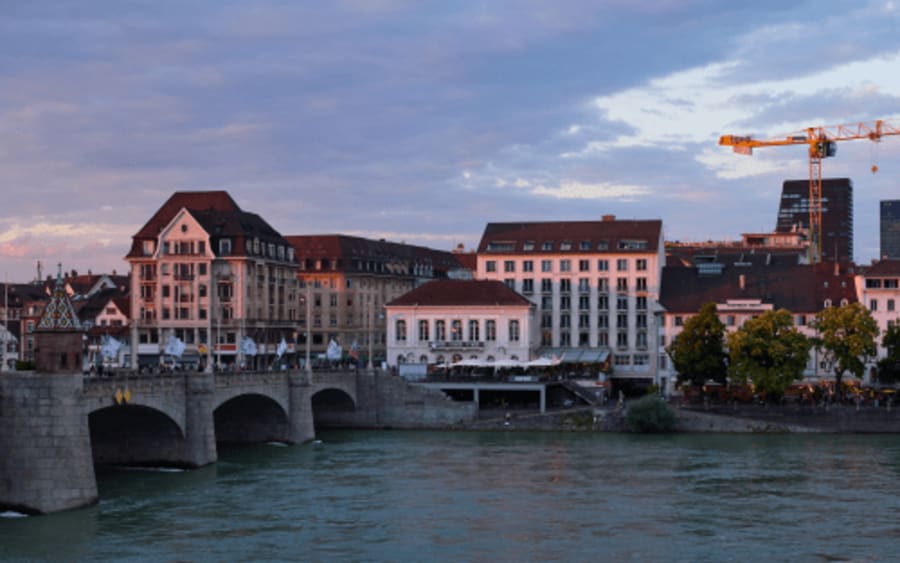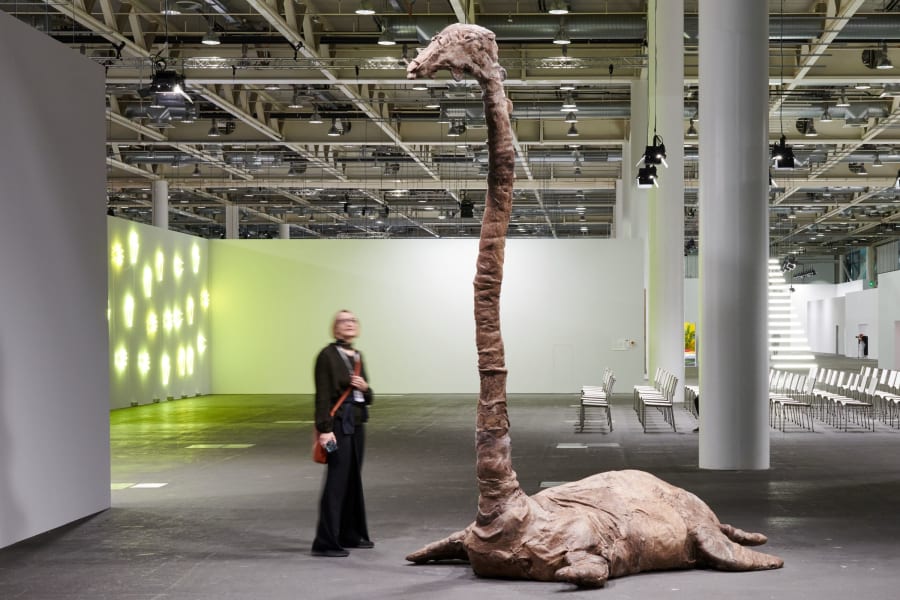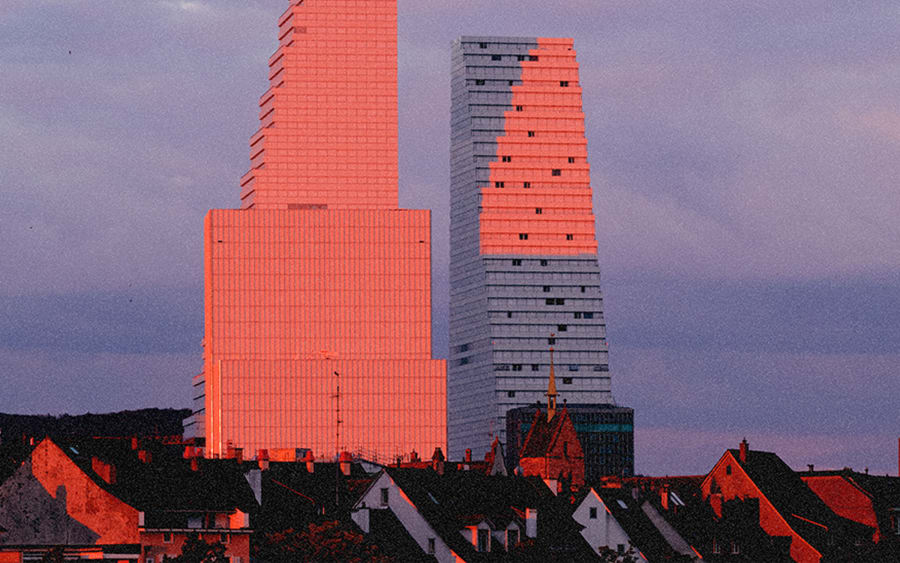You were recently appointed Chief Artistic Officer and Global Director, Art Basel Fairs. What does the new role encompass?
It marks a significant elevation of my responsibilities. When I joined Art Basel in 2022 as Director of Fairs and Exhibition Platforms, I already oversaw all our fairs globally. That role continues – but now, with an even broader mandate: shaping the organization's artistic and creative vision. In essence, I’m now charged with articulating how Art Basel expresses itself on the global stage.
A major focus will be the launch and direction of Art Basel Qatar. Entering a new region demands sensitivity, depth, and ambition. I’ll be leading this with a clear curatorial vision, working closely with a strong team on the ground to establish a fair that is both globally resonant and locally rooted.
I also oversee the vision of the newly launched Art Basel Awards, which are much more than a recognition platform – they are a key expression of our evolution as a cultural institution. The awards are designed to champion excellence, innovation, and impact across disciplines – from emerging talents to those shaping the future of the field. They also reflect our ambition to extend beyond the fair format and to become a more holistic platform for the arts. Last but not least, the Art Basel Awards are deeply aligned with our belief that Art Basel should not only mirror the art world but actively help shape its present and its future.
How have art fairs
changed over the past decade?
While
the core model of the art fair remains recognizable, everything surrounding it
has undergone a profound transformation. The acceleration of cultural
consumption – driven by digital technologies, social media, and the
constant availability of images – has reshaped how we engage with art. And
yet, in this landscape, fairs have emerged as the most vital live format for
encountering what is new and unfolding in real time.
Large-scale exhibitions like the Venice Biennale or documenta continue to be indispensable. Their retrospective depth and curatorial breadth offer a necessary pause – an opportunity to assess and reflect on broader trajectories in contemporary art. These events operate on longer timelines and with institutional distance, and because of that, they are able to frame cultural shifts with historical perspective.
Art fairs, on the other hand, deliver a more immediate snapshot. They function as agile, high-frequency stages where new ideas surface, new artists break through, and the market reacts in real time. In that sense, fairs are not in competition with biennials – they are complementary. One offers depth, the other immediacy. One sets a rhythm every few years; the other takes the pulse of the present.
Together, they shape the ecology of contemporary art, each with its own function, but increasingly interdependent. And let’s not forget: despite the speed of the digital world, the desire to stand in front of an artwork – to experience it physically, emotionally, and spatially – remains powerful. If anything, that desire is growing stronger.
How do you think fairs need to change to further adapt to a rapidly developing art world?
We must lead – not just follow – change. The art world’s historic emphasis on exclusivity still has its place, but today, a fair must also be open, porous, and interdisciplinary. We’re in a moment where conversations across disciplines – art, design, fashion, technology – are driving cultural innovation. Fairs like ours should be the nexus where these worlds meet.
At the same time, we must hold fast to the foundational truth: we are here to show and sell art. That commercial core sustains the galleries and, by extension, the artists. But we’re also evolving the experience – through curated programming, new voices, bold formats.
It’s also our duty to champion the most visionary work – to embrace risk, push boundaries, and offer visibility to those breaking new ground. We do this consistently by spotlighting emerging galleries and the avant-garde voices they represent.
What do galleries need right now, and how can Art Basel support them?
While we can’t control macroeconomic or geopolitical forces, we can design intelligent responses. That’s why we introduced smaller booth formats and reduced fees in Miami Beach, or launched Premiere in Basel to support galleries ready to scale up.
These initiatives are more than logistical – they’re strategic. Our expansion into new regions like the Middle East isn’t just about geography. It’s about growing audiences, building new collector bases, and creating sustainable futures for galleries of all sizes.
How can Art Basel support artists?
Artists are at the heart of everything. The most direct support we offer is through empowering their galleries – giving them the platform, visibility, and connections they need to thrive. But we’re also building new frameworks.
The Art Basel Awards are a clear example: over USD 300,000 will go directly toward artists at different stages of their careers. It’s a statement about our priorities and our belief in long-term investment in talent. Furthermore, the finalist in the Established Artist category will undertake a large-scale public commission to debut during Art Basel in Basel in June 2026, linking it back to our Swiss fair.
Why is Art Basel doubling down on its commitment to curated programming and artists right now?
You can’t expect people to keep returning to a fair unless you consistently refine and elevate the experience. Curation is how we stay relevant – not only in the moment, but over time. It’s our compass: it shapes how audiences engage, directs attention to what truly matters, and enables us to respond meaningfully to what’s emerging across the cultural landscape.
But let me be clear – every program we develop must ultimately serve our core mission: to power the world of art. As I’ve said before, Art Basel is a platform to show, sell, and buy art. That is our institutional responsibility, and we embrace it fully – because it’s a crucial part of sustaining the entire ecosystem we represent. The key lies in striking the right balance: delivering thought-provoking, world-class programming while keeping the market at the center. That balance is what defines Art Basel as an organization and sets it apart globally.
What else do you consider Art Basel’s institutional responsibility?
We know our role is to be a catalyst for the entire spectrum of the art world, and we take that responsibility very seriously. We want to support the already mentioned ecosystem – in partnership with all our stakeholders – to continuously push the expanded world of art into its future. We want to be a place where every member of the arts community feels represented, feels that they belong, and feels that their voice matters – whether that’s artists, gallerists, curators, or, of course, collectors. We also want to embrace the many interdisciplinary players who find it meaningful to engage with our world. We want to welcome them all.
What are some highlights you’re looking forward to at the fair?
The Unlimited sector is always a highlight in Basel – but this year, the ambition is truly remarkable. It demonstrates how deeply our galleries and artists believe in Art Basel as the definitive stage for presenting bold, career-defining works. Unlimited is not just a platform – it’s a statement of confidence in the power of contemporary art to challenge, surprise, and endure.
At the same time, I’m particularly proud of Katharina Grosse’s monumental project on the Messeplatz. She’s an artist of extraordinary vision, and this large-scale public commission is both physically and conceptually breathtaking. Watching it come to life day by day has been a privilege.
Off-site, we’re surrounded by exhibitions that speak to the intellectual and emotional depth of the art world. The Vija Celmins retrospective at Fondation Beyeler is a masterclass in precision and poetic restraint – a quiet, focused meditation on observation and the passage of time. In contrast, the Steve McQueen show at Schaulager is a powerful, immersive experience – intense, unflinching, and profoundly affecting. These are world-class exhibitions that confirm why, during this week, Basel becomes one of the true cultural capitals of the world.
And if I may, I’ll end with what is, for me, perhaps the most meaningful highlight of all: the Medardo Rosso exhibition at Kunstmuseum Basel. As an Italian, I can’t help but take pride – Rosso is one of the founding figures of what we define as contemporary sculpture, and this show gives him the depth and visibility he deserves.
Art Basel in Basel will take place from June 19 to 22, 2025. Get your tickets here.
Elliat Albrecht is a writer and editor based in Canada.
Caption for header image: Vincenzo de Bellis, 2023.
Published on June 16, 2025.


